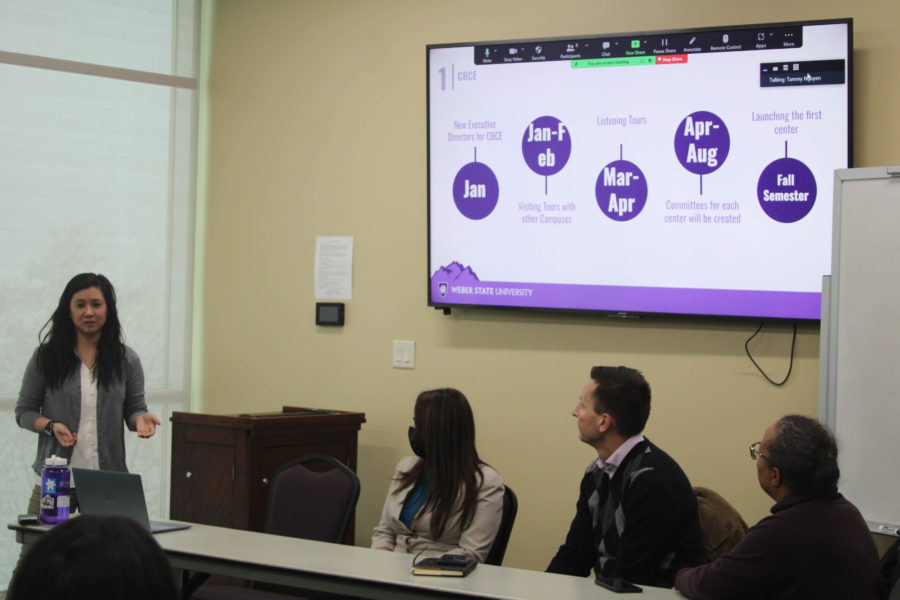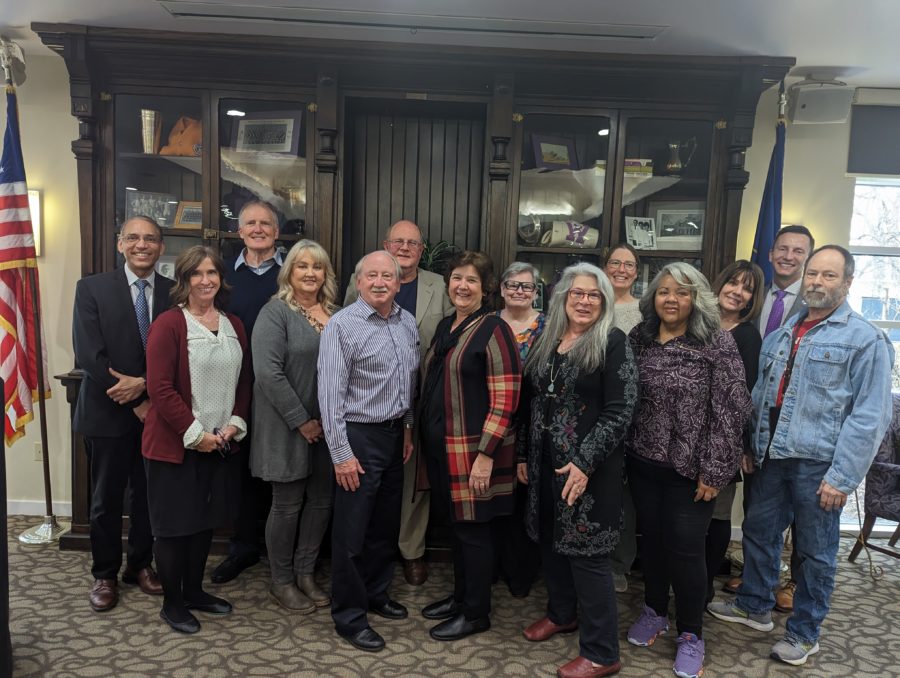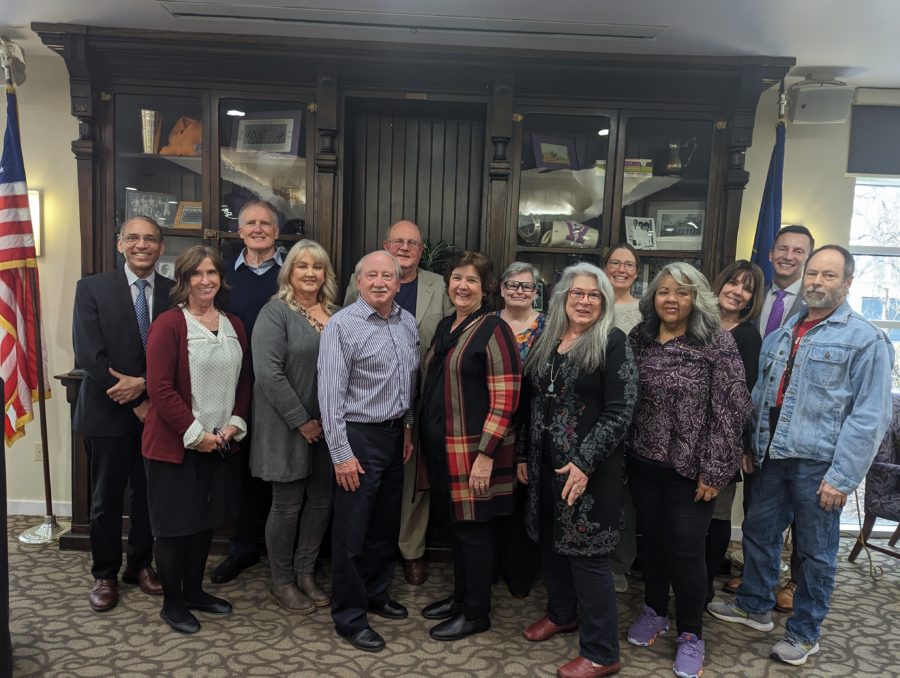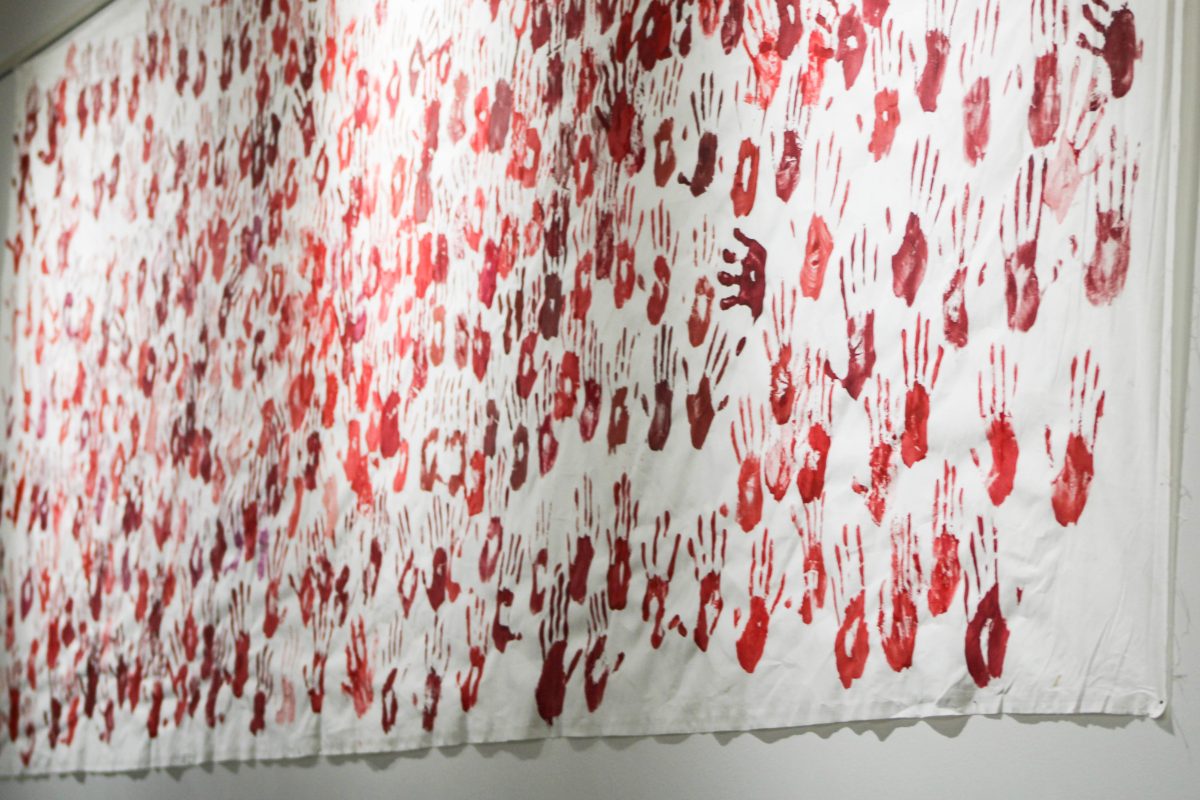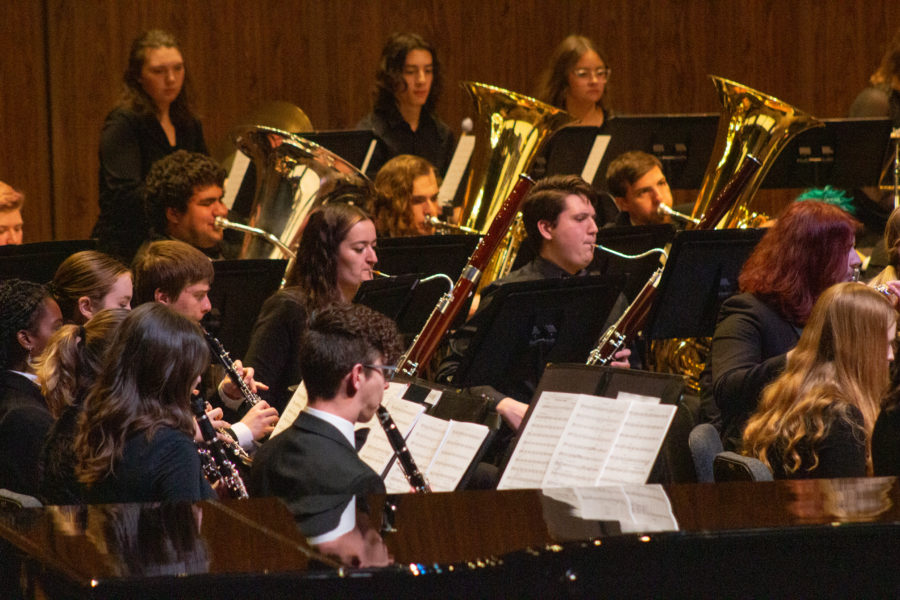 [/media-credit]
[/media-credit]
- WSU Opera Production students prepare their final scene for their Friday and Saturday performances.
Members of the Weber State University opera production class ran around the room frantically, sorting through loose papers, while a dead body lay in the middle of the bedlam.
They were preparing for the closing number of this week’s Opera Production Scenes, which will be held Friday and Saturday in the Browning Center’s Allred Theater. All of the scenes, according to WSU voice teacher and opera class costume designer Linda Lee, have a spooky slant in honor of Halloween.
“It’s more of the macabre, Jack-the-Ripper type settings,” Lee said. “Spirits are in the theater, haunting. And then we’ve got little spirits that are singing. It’s not so much spooky as it is normal life, where things just go bump in the night.”
Lee designs costumes for all the opera shows, and because this performance is composed of several scenes from different operas, some members of the cast have four or five costume changes.
“Some of the costumes we’re using from the past, because these time periods pop up frequently in shows,” Lee said. “I’m repurposing, because it’s a a lot of time, and it’s an expense.”
The opera production class puts on a full-length opera every other year. Last year’s production was Die Fledermaus by Johann Strauss.
For the weekend’s show, scenes will be compiled from several different operas with themes of haunting, murder and spirits, including The Medium, Hansel and Gretel, Falstaff, The Magic Flute and Gianni Schicchi. Scenes from a few dark musicals, like The Secret Garden and Jekyll and Hyde, will also be included.
Though the structure of the show is disjointed, Karen Brookens, who directs the class and teaches voice at WSU, provides a brief exposition before each scene.
“When (Brookens) does the opera scenes,” Lee said, “she also explains what’s happening, so you also get a kind of a prologue for what’s going on. It’s a good cross section of the arts.”
For the last scene, which comes from Forzano’s comic opera Gianni Schicchi, several family members have reunited around the deceased form of Uncle Buoso, pretending to mourn, but really searching around the house for his will. The active scene takes a lot of energy from the performers.
“In opera, you have to use a lot more of your body,” said Trenton Fordham, a vocal performance major at WSU. “It comes from your center and your core a lot more than other types of singing. There’s more sound, obviously, and it takes a lot more breathing.”
Fordham, who has a lot of experience in musical theatre and choral music, loves the opera despite its “stuffy history.”
“I guess people think that it’s always the fat guy singing up on stage, but there are a lot of newer operas that are more active,” Fordham said. “It’s not easy to sing, which makes me better. After, you’re just exhausted. It drains you emotionally, because you’re basically been singing for six hours.”
Though the scenes are mainly meant to be mysterious, Chelsea Cummins, a vocal pedagogy major and class member, said the scariest one is from Gian Carlo Menotti’s The Medium.
“It’s about a lady who holds séances, and something happens to her,” Cummins said. “Basically, by the end of the story, she’s completely crazy.”
Cummins said she likes the class because it works out her skills.
“It’s a good opportunity for me to get on a stage and to practice learning to act and learning to be a good performer,” she said. “It tests my voice, and it makes me be able to use my voice in different ways.”
Because opera demands more breath support, most choral students said they are not used to singing it.
“You can get pretty nervous,” Cummins said, “especially since, with opera style, you don’t get a microphone, which because with opera style, it can be a little nerve-wracking.”









